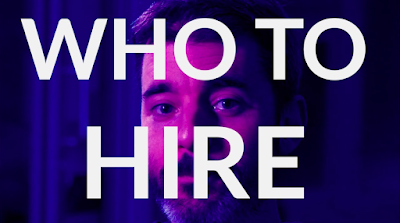I am an older guy. I was on the forefront of the revived brand management movement in the mid-to-late 1990s. And I have ridden it out until the present. I was also an early user of the Internet - going as far back as 1976 when it was primarily a military communication vehicle (ARPANET). Further, I was on the ground floor of coding, learning Fortran, COBOL and basic assembler language in college. When I was at Andersen Consulting (now Accenture) in New York, I was an expert in reading binary code, hexadecimal code and core dumps to identify coding errors. I had an online newsletter before there were blogs and I started a few of the first marketing-oriented blogs. And, I have kept up with web design, SEO, content marketing, social media marketing (Google, Facebook, et al.), digital marketing, mobile marketing, CRM, data analytics, email marketing, marketing automation, CTV/OTT, geofencing, retargeting, podcasts, YouTube channels, etc.
I share this background to indicate that I am grounded in both classical marketing and branding concepts and techniques and the most recent tools and advances in social media and digital marketing. I am not just speaking from one of these two perspectives. And I am not a luddite.
Here is my point. Social media and digital marketing are overrated. Brands and enterprises have become over reliant on them. Why? They are modern - the latest "shiny objects." They are relatively inexpensive. And, most importantly, you can track and measure their results (which cannot be said of many other marketing components).
However, while they have their place in the marketing mix, here is what they continue to lack - the human touch, relationship building, peer-to-peer marketing, real world publicity stunts, and the power of a good salesperson to close a sale.
Yes, over time, blog posts, podcasts and YouTube and Vimeo videos can create a certain level of trust, emotional connection and thought leadership. And, there are ways to make digital content go viral, especially to an extent that cannot be achieved otherwise. However, more "high touch" marketing tactics must be kept in the marketing mix to create a truly integrated and powerful marketing campaign.
When a person only knows how to use a hammer, everything looks like a nail. When marketers only know social media and digital marketing, the primary marketing vehicle becomes digital by default.
To have a fully rounded marketing campaign that is highly effective, generally you need the following marketing components: target market definition and segmentation, marketing research for customer insight, marketing strategy and plan development, graphic design, videography, copywriting, media planning and placement, media relations and publicity and social media and digital marketing expertise.
I have witnessed more and more companies with limited resources relying solely on social media and digital marketing to achieve their marketing goals - often with lackluster results. This is not always the case, but it is often the case.
If I were to start a marketing campaign with very limited resources, I would start with media relations and publicity including proactive publicity and carefully crafted publicity stunts. In today's world, this would include social media and digital marketing. But social media and digital marketing wouldn't be the only components of such a campaign.
So, my core message in this blog post is that while social media and digital marketing are likely to be components of your integrated marketing campaign, they should not be the sole or dominant components of that campaign.









